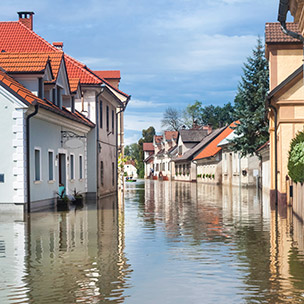July 31, 2015 — The ability to anticipate floods and mobilize a timely response — increasingly a life-and-death matter as extreme weather events become more common — depends to a sobering extent on 10 satellites that measure precipitation and beam data to Earth, where governments and emergency response teams use them to guide efforts to protect people and property.
Even more sobering: Four of the 10 satellites have already exceeded their anticipated functional lifespan, with no plans in place to deploy replacements, according to a research article published earlier this year in the journal Environmental Research Letters.
The article reports on research by Cornell University engineering professor Patrick Reed and colleagues from Princeton University and the Aerospace Corporation. The researchers used information on the distribution and movement of water around the planet along with modeling to calculate the extent to which the current satellites are able to provide data needed for flood forecasting. They also calculated the coverage that would remain should all four aging satellites stop functioning, and explored what arrangement of satellites would be needed to optimally do the job. They found that even the current set of 10 satellites fails to provide sufficient coverage — with the biggest gaps, ironically, in South America, central and eastern Africa, and Asia, where populations are particularly vulnerable to floods. Not surprisingly, loss of the four antiquated satellites would make things even worse, with far less of the globe covered adequately over space and time.
The good news? Addition of just two new satellites with sufficient international collaboration would boost flood forecasting capability even beyond that of the current fleet.
Noting that their results demonstrate that improvements in this rain-monitoring system could have huge benefits for humanity, the authors call for an international conversation aimed at resolving the current and anticipated satellite rainfall data deficit “to ensure that the global portfolio of space-based Earth rainfall observations are sufficient to manage the potential increased flood risks posed by climate change.” ![]()
Thanks to Science for Environment Policy for alerting us to this study. Photo © iStockphoto.com/kasto80
Ensia shares solutions-focused stories free of charge through our online magazine and partner media. That means audiences around the world have ready access to stories that can — and do — help them shape a better future. If you value our work, please show your support today.
Yes, I'll support Ensia!
